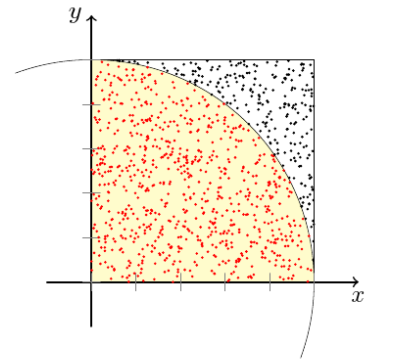This material is part of the course Practical Introduction to Parallel Programming and meant for educational purposes only.
Background
The area of a circle of radius \(R\) is \(\pi R^2\), the area of a square with side length \(2R\) is \(4R^2\). If the circle is inscribed inside the square then the ratio of both areas is \(\pi/4\).
Monte Carlo method
If we pick \(N\) points at random inside the square and count the number of points that are inside the circle (\(M\)) then we can compute the approximation \(\pi\approx 4M/N\).

Hints
You can retrieve an upper bound of the numbers of threads that will be created in a parallel regions using omp_get_max_threads(). This even works outside any parallel region.
Use an array of size omp_get_max_threads() to pass data from the different threads to the master thread.
Use #pragma omp parallel default(none) to force yourself to specify the behaviour of all variables (private/shared) explicitly.
 INGInious
INGInious